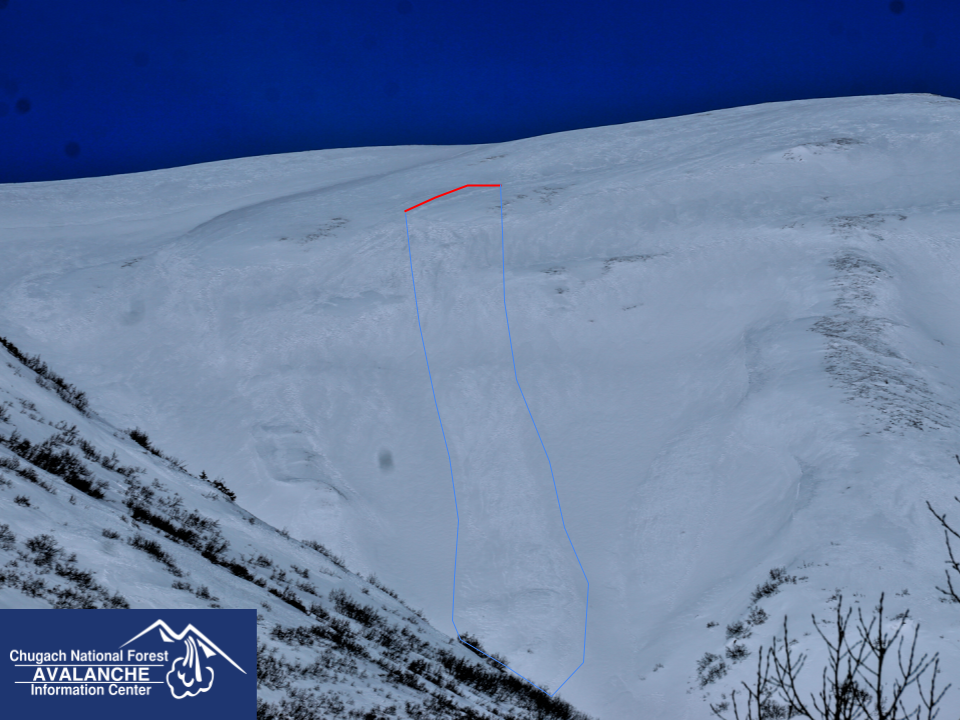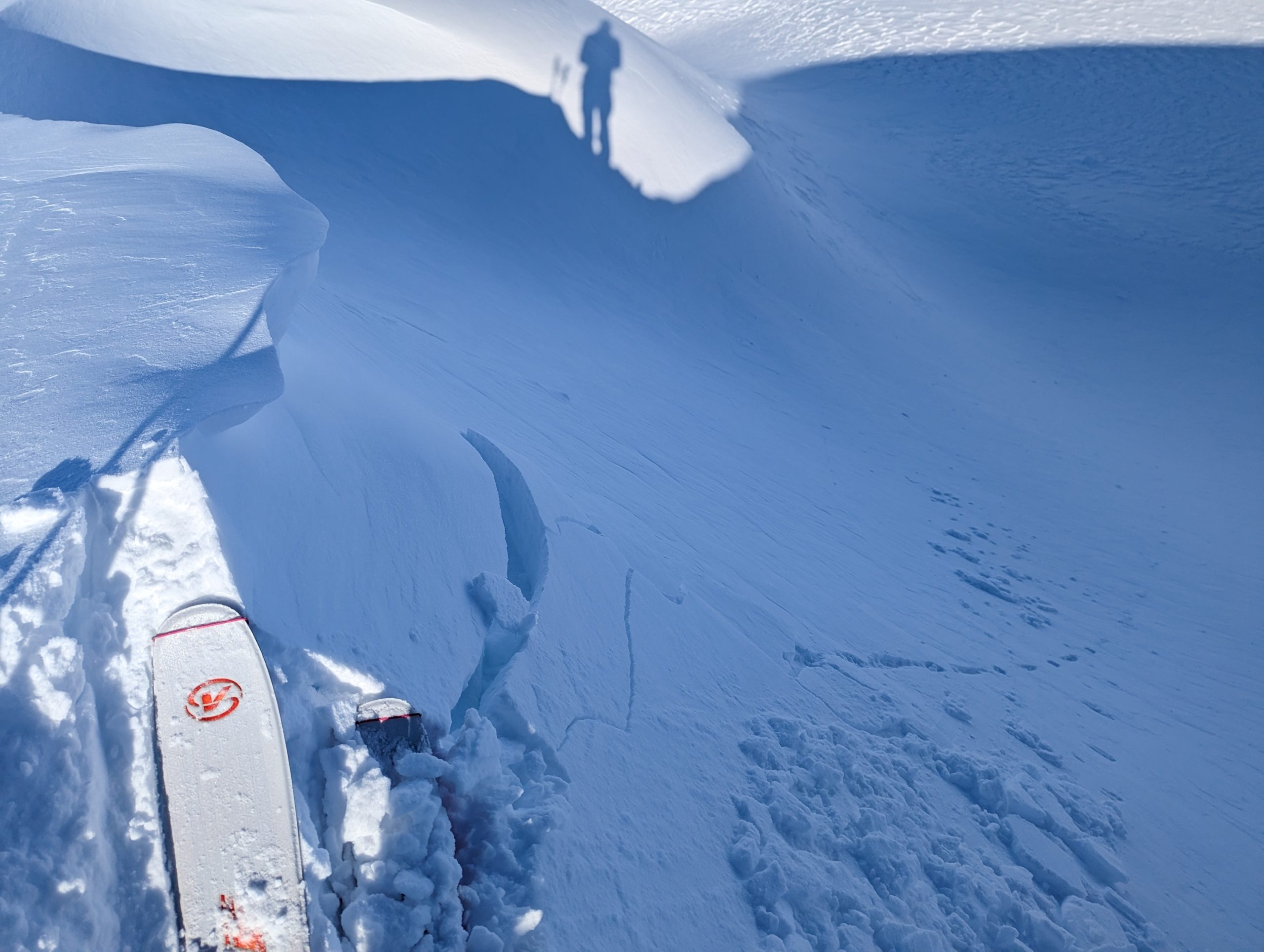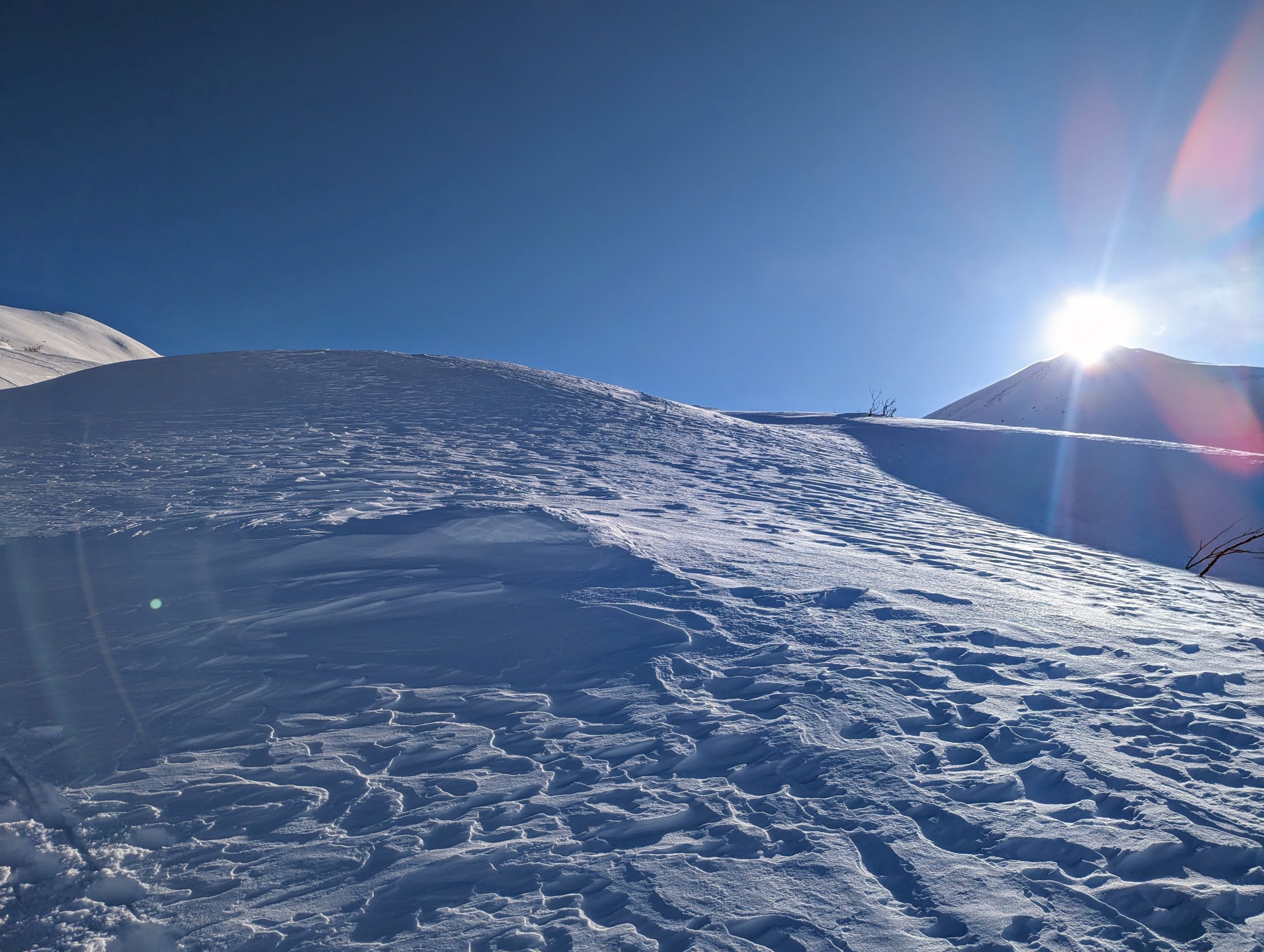Turnagain Pass
|
|
The avalanche danger is CONSIDERABLE above 2500′. Continued NW outflow winds are making natural wind slabs up to 1′ deep possible and human triggered avalanches likely in areas with active wind loading. These winds tend to favor areas along Turnagain Arm and other places where gaps winds are common. In areas sheltered from the recent winds the likelihood of avalanches is lower. Throughout the day the winds are expected decrease which should lead to decreasing likelihood of natural avalanches.
From 1000′ to 2500′ the avalanche danger is MODERATE. Overall, these elevations were less exposed to the recent winds. However, it is still important to identify and assess areas that could have been recently wind loaded. Below 1000′ the avalanche danger is LOW.
SUMMIT LAKE / LOST LAKE / SNUG HARBOR: Strong NW outflow winds impacted these areas over the past few days and wind slabs are likely for human triggering. In areas with a thinner snowpack, like Summit Lake, the recent wind loading could be enough to make buried weak layer more sensitive today. Careful snowpack evaluation is recommended before entering avalanche terrain.
Turnagain Pass Avalanche Awareness Day – Mar 18, 2023: Mark your calendars and swing by on your way to or from your backcountry ride or ski!! Test your beacon skills, chow down on hot dogs, and bring your questions for CNFAC forecasters. The Alaska Avalanche School will be there along with a chance to demo snowmachines from Alaska Mining and Diving Supply and Anchorage Yamaha and Polaris. More details HERE!



